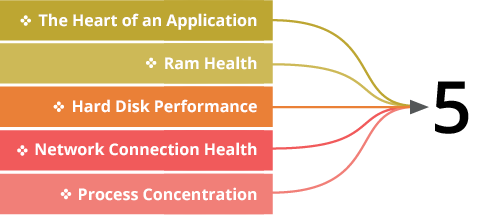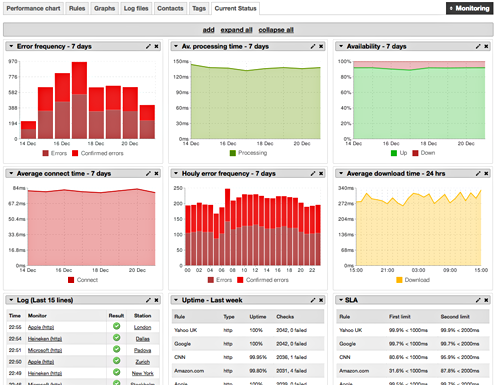When it comes to effective application monitoring, there are literally hundreds of various metrics you could monitor. Of course, the exact metrics you choose to monitor directly depends on the use and complexity of your Web application. However, with this mind, there are several fundamental metrics all administrator’s should monitor. The following five elements of effective application monitoring on the physical components of your application network all play a direct role in the performance, stability and reliability of your Web applications.
The Five Elements of Application Monitoring Metrics

If you desire to establish an application that’s free from a performance issues and errors that may hinder your online success and reputation, then take a moment to explore the following five elements of effective monitoring for application physical components.
- The Heart of an Application – Perhaps the most important physical component to monitor within your application infrastructure is the CPU, or Central Processing Unit. This vital component literally controls the rest of the components within an application system. By understanding the performance of the CPU, the performance of other physical components is revealed. Remember, if your CPU is under-performing then the rest of the entire application infrastructure will suffer.
- RAM Health – No, I’m not talking about a truck or cute mountain-side dwelling creatures, but rather the Random Access Memory of your application. All Web applications utilize physical memory as a temporary storage area. The program files stored within the RAM drive are those that are commonly accessed by the CPU. Therefore, the greater your RAM storage, the faster your CPU will perform, which ultimately increases the speed and functionality of your applications.
- Hard Disk Performance – The importance of a high-performing hard disk is nothing new to many application developers. There are many elements that influence the overall performance of your application; however, few have quite the level of influence as hard disk performance. If the hard disk becomes too full, the entire operation will suffer. Therefore, it’s imperative that when you monitor web applications your software is capable of predicting future capacity issues so administrator’s are capable of adjusting resources or upgrading hard disk storage capacity.
- Network Connection Health – Although the aforementioned system metrics are essential for a full-functioning application, if these components are unable to communicate with other physical and virtual components through its network, then your CPU utilization rate doesn’t matter. Therefore, in order to establish a healthy application you must establish several network connection monitoring agents to keep track of communication levels.
- Process Concentration – As applications grow and become more advanced, so does the number of processes, or transactions. While most advanced computer systems are able to handle multiple processes at once, there is a limit to the number of threads utilized by your applications. Application monitoring solutions are able to not only monitor the health of these threads, but also notify administrator’s should the number of threads (or processes) outweigh the capabilities of a current system.


